| Author |
 Topic Topic  |
|
|
|
lovehorses
Silver Member
  
 England England
390 Posts |
 Posted - 12 Jun 2007 : 9:50:09 PM Posted - 12 Jun 2007 : 9:50:09 PM




|
Hi,
Didn't know whether to stick this here or in the 'bloodlines' section but did it there a while ago and STILL don't know!
When an horse is described as (for examle) 'spanish' but a number of generations are born in GB but still of Spanish (wholly) origins, is this correct?
I'm probably being a bit stupid and not good at explaining myself (surprise) so I'll give you a (purely ficticious) example.......
2007 filly by 'straight spanish' stallion and 'straight spanish dam'
stallion born in UK but grandsire and mother were born in spain (when imported to spain, just for this example, unknown)
dam was imported from spain in 1999 (no details about where parents born etc)
............................
the question I'm asking is, how does one decide when a foal (etc) is 'straight' anything? with the way arabs are shipped around the world how do you decide what % is anything?
My cousin (in Australia) has recently bought a 'pure spanish' filly that is 7 generation born in Oz but is entirely 'spanish' only lines.....how is this Spanish and not Australian?
(for that matter I've seen many horses that are described as USA but they still have SS or SE appended!......why? what am I missing?
|
Trudi x
trudi.pelham@googlemail.com
 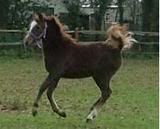 |
|
Report to moderator
|
|
|
Mike
Platinum Member
    
Eire
1872 Posts |
 Posted - 12 Jun 2007 : 10:43:41 PM Posted - 12 Jun 2007 : 10:43:41 PM




|
Welcome to the often confusing world of putting label's on horses!
A "Straight Spanish" horse traces in all lines to horses registered by the Yageda Militar in Spain, irrespective of how many generations have been born in other countries.
A "Straight Egyptian" horse is one that meets the Pyramid Societies definition which includes most but not all of the horses registered by the RAS and later EAO in Egypt and horses descending in all lines from these "acceptable" horses.
A "Straight Crabbet" horse ia on that satisfies the Crabbet Org's Australian definition so that a horse must trace in all lines to horse either bred or owned by Lady Wentworth or her parents. The "owned by" bit is important in this context as otherwise a fair chunk of "Crabbet" horses worldwide would be disqualified. This definition means that some horses became "Crabbet" at a particular point in time, and that one horse can be "Straight Crabbet" whilst it's full siblings aren't.
Straight Russian horses essentially trace in all lines to horses bred at Tersk in Russia and consequently registered in the Russian stud book.
The Polish definition is analogous to the Crabbet one in that whilst it is simple enough , that is tracing in all lines to horses bred by one of the Polish State stud's. There are now ambiguities, for example the Poles used the stallions Monogramm, Sanadik El Shaklan & Laheeb fairly recently and all the offspring of these sires bred by in Poland by the state studs are Polish, but if you or I were to buy the dam of one of these Polish foals and breed a full sibling using one of these three sires, then that foal would not be Polish.
Clear as mud???
Except of course that there's "crabbet" in egyptian, polish, russian & spanish lines. "Egyptian" in crabbet, polish & russian, weil-marbach & CMK lines. Weil, Babolna, Polish, Crabbet & French blood in "Russian" lines. and so on ad nauseum. And that's before it becomes complex Sticking "labels" on horses makes things easier for mere mortals to cope with, but often (conveniently) hides relationships that we don't always want to acknowledge
Mike
|
Edited by - Mike on 12 Jun 2007 11:25:02 PM |
Report to Moderator  |
|
|
pat ww
Platinum Member
    
United Kingdom
3459 Posts |
 Posted - 13 Jun 2007 : 08:42:14 AM Posted - 13 Jun 2007 : 08:42:14 AM




|
Hi Mike, lovely explanation, but how about saying how the "straights" are meant to be visually identifyable? all the history you listed depended on the original purchases by the studs in question.
It was in the eye of the beholder what that particular individual valued in the appearance of the horse in front of him, and their selection of foundation stock and breeding policies reinforced these characteristics.
Today we have the broadest generalisations, eg, Crabbet are expected to be a solid plainer riding type with good movement: horses are advertised with "Russian movement", Egyptian are meant to be more refined and exotic, but often with longer cannon bones, spanish for smooth top lines and temperament. You know these generalisations much better than I do.
Please enlighten us further and I know your huge photo archive will dispel and disprove many of these widely held myths on straight "types" and others will go to prove it!
|
Report to Moderator  |
|
|
lovehorses
Silver Member
  

England
390 Posts |
 Posted - 13 Jun 2007 : 12:12:52 PM Posted - 13 Jun 2007 : 12:12:52 PM




|
Wow Mike! That made sense!
So many people have tried to explain it to me and you're the 1st to come close to me understanding!
So........if I try to 'label' the arab side of my AA I can't just look at where his ancestors were born......how do I work it out? Do I have to go (potentially) many years back to find out his % this or that? or only as far back as his closest ancestor that is SE/SS or whatever? (and how would I recognise that anyway?!) |
Trudi x
trudi.pelham@googlemail.com
  |
Edited by - lovehorses on 13 Jun 2007 12:14:05 PM |
Report to Moderator  |
|
|
Pashon2001
Platinum Member
    
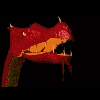
3575 Posts |
 Posted - 13 Jun 2007 : 12:52:46 PM Posted - 13 Jun 2007 : 12:52:46 PM





|
| Trudi - as your boy is 75% arab its difficult to work the exact percentages out - I'm sure someone can but my maths was never good and has all but vanished now. But he his arab side is approx 75% polish, and the other part egyptian/crabbet. |
     
www.jarvastud.com http://hocon.webs.com/ |
Report to Moderator  |
|
|
lovehorses
Silver Member
  

England
390 Posts |
 Posted - 13 Jun 2007 : 1:10:36 PM Posted - 13 Jun 2007 : 1:10:36 PM




|
Hi Pashon2001 *waves*
I wasn't specifically looking for my boy just trying to learn something new!
Thought I'd 'practise' on mine! My last boy was Spanish and as only him and his mum were born in the UK it was easy to see how. When my cousin said his new one was Crabbet (not sure how much) but is a number of generations born over there I was trying to fathom how the labels are decided. VERY confusing!
Does allbreed (and similar sites) state the 'type' or do you REALLY have to be knowledgeable to work these things out? |
Trudi x
trudi.pelham@googlemail.com
  |
Report to Moderator  |
|
|
Pashon2001
Platinum Member
    

3575 Posts |
 Posted - 13 Jun 2007 : 1:36:05 PM Posted - 13 Jun 2007 : 1:36:05 PM





|
all breed doesnt state type. You either have to be very knowledgeable (which helps, wish I was) or a more helpful site is arab datasource, but you do have to subscribe. This one is more helpful with types, although you do have to research the pedigree it does state owner/breeders so much easier to sort out.
Mike will agree that it takes years to just know these things, and most people who do actually specialise in one particular type.
There is an awful lot of confusion in that you can have an 'egyptian' or 'polish' horse for example that if owned or bred at the crabbet stud is instantly crabbet, even though it could also be pure polish!!! |
     
www.jarvastud.com http://hocon.webs.com/ |
Report to Moderator  |
|
|
Athena
Silver Member
  
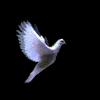
England
442 Posts |
 Posted - 13 Jun 2007 : 2:53:36 PM Posted - 13 Jun 2007 : 2:53:36 PM




|
I think the "labels" make a little more sense if one acknoledges that they do reflect different breeding priorities amongst the breeders involved, both historic and current.
Historic breeders made choices in what they selected for so that the old Egyptian royal studs, and later the EAO bred a certain "type" over time and generations (yes, I know this is gross generalisation!). Later breeders got into the label/brand they liked and continued to select for those traits that made them choose said subgroup in the first place. This is why a "Straight Egyptian" can have quite a high percentage of Crabbet lines but still not look Crabbet. Equally the Crabbet bloodline base was approximately 50% Old Egyptian (Ali Pasha Sherif) but Crabbet horses today do not look Egyptian.
I spend much of my time working out pedigree percentages but at the end of the day you have to know something about the actual individuals in the pedigree for it to all make much practical sense. It is interesting to work out Crabbet or Egyptian percentages in other bloodline groups but all it really proves is the importance and influence of a few early Arabian horses breeders. Not that I am trying to say one shouldn't do it, just that one should try to develop an understanding of the actual traits individual lines as well as bloodline groups represent.
Hope I have not just muddied the waters here! |
Report to Moderator  |
|
|
barbara.gregory
Platinum Member
    
United Kingdom
4531 Posts |
 Posted - 15 Jun 2007 : 08:18:16 AM Posted - 15 Jun 2007 : 08:18:16 AM




|
As Mike so clearly put it, your horse takes on the bloodline of it's parents. If you mate a "Spanish" to an "Egyptian" you get a "golden cross" as the Spanish/Egyptian is called. So your foal will be 50% Spanish and 50% Egyptian. Mike didn't mention the "Spanish eyes", huge and black, stunning.
I always think of Aswan as Egyptian but others think of him as Polish. Aswan was a SE stallion who was bought and bred to the Polish mares and never sired a SE foal. His offspring are Polish as they were bred at the Polish state stud. Personally I think they are Egyptian/Polish/Crabbet and whatever mix there is in them but what do I know!!!!
To be "straight" anything all of the ancestors of your horse have to be accepted as 100% of that perticular bloodlines. If ever even way back ten generations or more ago there is any different blood in the pedigree then that horse and all it's offsprings will never be "straight".
barbara |
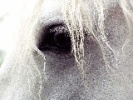   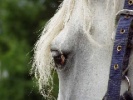 |
Report to Moderator  |
|
|
Vygoda
Platinum Member
    
United Arab Emirates
1627 Posts |
 Posted - 15 Jun 2007 : 09:08:25 AM Posted - 15 Jun 2007 : 09:08:25 AM




|
I always think of Aswan as Egyptian but others think of him as Polish. Aswan was a SE stallion who was bought and bred to the Polish mares and never sired a SE foal. His offspring are Polish as they were bred at the Polish state stud. Personally I think they are Egyptian/Polish/Crabbet and whatever mix there is in them but what do I know!!!!
Sorry Barbara  , Aswan originally known as Rafaat in Egypt, went to Russia not to Poland. He was given as a gift to Russia and his name changed to reflect their 'help' given in building the Aswan dam. , Aswan originally known as Rafaat in Egypt, went to Russia not to Poland. He was given as a gift to Russia and his name changed to reflect their 'help' given in building the Aswan dam.
|
Report to Moderator  |
|
|
Mike
Platinum Member
    
Eire
1872 Posts |
 Posted - 16 Jun 2007 : 02:42:14 AM Posted - 16 Jun 2007 : 02:42:14 AM




|
I think the "labels" make a little more sense if one acknoledges that they do reflect different breeding priorities amongst the breeders involved, both historic and current.
Historic breeders made choices in what they selected for so that the old Egyptian royal studs, and later the EAO bred a certain "type" over time and generations (yes, I know this is gross generalisation!). Later breeders got into the label/brand they liked and continued to select for those traits that made them choose said subgroup in the first place. This is why a "Straight Egyptian" can have quite a high percentage of Crabbet lines but still not look Crabbet. Equally the Crabbet bloodline base was approximately 50% Old Egyptian (Ali Pasha Sherif) but Crabbet horses today do not look Egyptian.
I spend much of my time working out pedigree percentages but at the end of the day you have to know something about the actual individuals in the pedigree for it to all make much practical sense. It is interesting to work out Crabbet or Egyptian percentages in other bloodline groups but all it really proves is the importance and influence of a few early Arabian horses breeders. Not that I am trying to say one shouldn't do it, just that one should try to develop an understanding of the actual traits individual lines as well as bloodline groups represent.
Hope I have not just muddied the waters here!
I don't think that this is muddying the waters at all, though the differences between the horses themselves is far less marked than it was 20 or more years ago Before the international trade really got going, it was certainly true that breeders in differing areas, had different priorities as to what constituted their "ideal" arabian and the effect of this could be seen in the horses they bred Before the international trade really got going, it was certainly true that breeders in differing areas, had different priorities as to what constituted their "ideal" arabian and the effect of this could be seen in the horses they bred However, by and large (though there are always exceptions) most breeders are aiming for more or less the same thing whilst still clinging to the notion that particular groups of horses have clearly defined strengths and weaknesses. However, by and large (though there are always exceptions) most breeders are aiming for more or less the same thing whilst still clinging to the notion that particular groups of horses have clearly defined strengths and weaknesses.
What I believe is true, is that our misconceptions and predjudices are firmly rooted in the dim and distant past, whilst the horses are equally firmly "here and now" So we go around telling ourselves that anything that looks like a good big bold all-round riding horse must be at least mainly English, any horse that can move must have a fair dollop of Russian blood, if its refined and "pretty" the horse is at least mainly Egyptian and so on So we go around telling ourselves that anything that looks like a good big bold all-round riding horse must be at least mainly English, any horse that can move must have a fair dollop of Russian blood, if its refined and "pretty" the horse is at least mainly Egyptian and so on All complete rubbish, but ever so comforting, especially when one never bothers to question either the breeding or one's own biased opinion All complete rubbish, but ever so comforting, especially when one never bothers to question either the breeding or one's own biased opinion  The truth is that without context as a guide, even an expert can't tell what label to stick on a horse simply by looking at it The truth is that without context as a guide, even an expert can't tell what label to stick on a horse simply by looking at it the fact is that people merely guess based on "things they know to be true" the fact is that people merely guess based on "things they know to be true" 
No matter how hard one believes it to be the case, one cannot spot an SE with a dozen crosses to Nazeer, by its short neck, lousy legs, lack of depth or heartroom and associated complete lack of movement If the label fits, the description may not & of course vice versa If the label fits, the description may not & of course vice versa 
The naive and simplistic "egyptian type, spanish eyes, russian movement, crabbet temperament ... etc" view of arabian horses and breeding is in reality, about as much practical use as a chocolate teapot   
Mike |
Report to Moderator  |
|
|
barbara.gregory
Platinum Member
    
United Kingdom
4531 Posts |
 Posted - 16 Jun 2007 : 09:00:36 AM Posted - 16 Jun 2007 : 09:00:36 AM




|
Thank you, Jane. Wrote in a rush to get to work after three hours doing the horses and a very late night. Complete mental block putting "Polish" not Russian, however I would still call Aswan Egyptian! I was going to make a couple of comments about the Polish so was thinking of Polish lines but ran out of time and didn't have time to proof read my post (hence the typos as well).
I agree with Mike about the fact that the qualities we ascribe to the various lines are very blurred these days but good Spanish eyes are hard to miss.
Barbara |
    |
Report to Moderator  |
|
|
Vygoda
Platinum Member
    
United Arab Emirates
1627 Posts |
 Posted - 16 Jun 2007 : 09:28:51 AM Posted - 16 Jun 2007 : 09:28:51 AM




|
Barbara,
Thank you for your reply.
I would always class Aswan as Egyptian and he contributed greatly to breeding world wide, not only in Russia, as his blood is in Poland too apart from other breeding programmes. So is Aswan a bit like Skowronek, bred in Poland, and accepted in SE pedigrees by certain groups?
Too, I gave up ages ago trying to put characteristics to particular bloodlines  and as decided by high profile marketing groups. and as decided by high profile marketing groups.
IMO, the question of straight this and that has to be out the window as such, it is a horse itself that matters. But what we breed is up to the individual.
I am as confused as anyone else needless to say  so lovehorses, join the party so lovehorses, join the party  . .
|
Edited by - Vygoda on 16 Jun 2007 09:56:32 AM |
Report to Moderator  |
|
|
pat ww
Platinum Member
    
United Kingdom
3459 Posts |
 Posted - 16 Jun 2007 : 09:56:03 AM Posted - 16 Jun 2007 : 09:56:03 AM




|
I have to agree that you should look for qualities in an individual horse, but human nature being what it is those groups that have been shaped by certain large scale breeders will that create one's ideal of a 'perfect' Arabian.
I still have my old books published in the 1940's where defintions included height, "stallions generally 14.2 to 3, mares a little smaller". Whatever shape of horse we like, today it has to be that shape but a hand taller.
Breeders are still shaping the breed, todays show results have many much more refined heads than would have won twenty years ago, when judging emphasis was still on a traditional riding horse, hence the dominance of the older English lines in-hand having crossed into dominance in ridden and now much more exotic animals are gaining ridden accolades.
I see no-one has comented on French bloodlines, some of the racing ones do not resemble many peoples idea of an Arab at all.
It is the responsibility of all breeders to keep as closely to breed type definition in their breeding choices, and not rely on specialist traits being developed. Otherwise our best ridden horses could have ended up like mini hunters, our racing lines like thoroughbreds and in-hand show horses as poodles.
It is good to see the 'pretty' Arabs performing, why should a show horse not race, do dressage, jump, and do endurance after a successful in hand career?
Is anyone up for the ultimate performance challenge, dressage test, show jump, a one mile AMATEUR race and a ten mile trek round the racecourse, after they have had their in hand show places to see just how the different bloodlines actually compare? This should be a fun challenge, no professional riders involved unless on their OWN horse.
|
Report to Moderator  |
|
|
Mike
Platinum Member
    
Eire
1872 Posts |
 Posted - 16 Jun 2007 : 11:39:41 AM Posted - 16 Jun 2007 : 11:39:41 AM




|
Hi,
Regarding Skowronek (generally considered to be a Polish horse, but bred by a Russian in what was then part of Russia ) Whilst both the Pyramid Society and the Asil Club specifically exclude him as being either SE or asil, the Pyramid Society Europe has in the past allowed horses with lines to Skowronek to be shown in "SE" classes ) Whilst both the Pyramid Society and the Asil Club specifically exclude him as being either SE or asil, the Pyramid Society Europe has in the past allowed horses with lines to Skowronek to be shown in "SE" classes Taking the view that by the Pyramid Societies own definition, semantically the horse excluded isn't Skowronek himself but his Crabbet bred son Registan, and given the confusion and acromony over Skowronek's "purity" horses tracing to him through sons or daughters other than Registan have been given "the benefit of doubt" and have been allowed to compete as SE Taking the view that by the Pyramid Societies own definition, semantically the horse excluded isn't Skowronek himself but his Crabbet bred son Registan, and given the confusion and acromony over Skowronek's "purity" horses tracing to him through sons or daughters other than Registan have been given "the benefit of doubt" and have been allowed to compete as SE
Regarding French horses, take a look at the stallion Salam by the french bred Atif below:-

Does he look anything like a TB?? Do the Russian horses with French lines look like TB's? Do the Russian horses with French lines look like TB's? I think not! I think not!  One simply cannot generalise from the few to the many based on one's own experience and certainly not based on hearsay and "common knowledge" One simply cannot generalise from the few to the many based on one's own experience and certainly not based on hearsay and "common knowledge"
Regarding the Golden Cross, what is true is that two specific horses crossed very well indeed, again one cannot apply what may be true for a small number of horses to whole groups, nor do I believe that any of the other Morafic sons in Europe at the time were ever bred to Spanish mares, so one cannot realistically even claim a demonstrable "nick" between specific lines within the two groups
It's a bummer isn't it???
Mike |
Report to Moderator  |
|
|
pat ww
Platinum Member
    
United Kingdom
3459 Posts |
 Posted - 16 Jun 2007 : 9:05:03 PM Posted - 16 Jun 2007 : 9:05:03 PM




|
Hi Mike , point taken about generalisations, but isn't that was labelling is all about? it is a generalisation that some of the racing Arabs dna may not stand up to close scrutiny if we could go back a few generations.
The much larger breeders of the past used to cull what they considered to be inferior results of their breeding programs, missing the opportunity perhaps to see whether certain charactersitics skipped a generation.
In human terms, red hair in my family misses a generation, My grandmother had it but non of her 8 children, most of whom had children of their own, and my generation has red heads in each of the families, but not in our children. But it is evident again in my own grandchildren.
I don't think I will live long enough to scratch the surface of horse genetics, but there does seem to be a lot of wastage, champions that do not breed on go into obscurity, while we seek out those with current winning offspring often without regard for the historical background of the potential matings.
Lovely photo, do you have some more that show the 'stereotype' of the straights with contrasts? Just to dispel some myths. |
Report to Moderator  |
|
|
lovehorses
Silver Member
  

England
390 Posts |
 Posted - 16 Jun 2007 : 9:34:00 PM Posted - 16 Jun 2007 : 9:34:00 PM




|
| I (think!) I now understand about the 'labels'..........can someone now enlighten me about the (usual/desireable) characteristics? (I've had a stright Spanish who had the beautiful eyes, he was also deap in girth, had 'substantial' legs and was rather short (14.1) is this 'typical' (along with his incredibly laid back temperament)). What is typical about other lines? |
Trudi x
trudi.pelham@googlemail.com
  |
Report to Moderator  |
|
|
barbara.gregory
Platinum Member
    
United Kingdom
4531 Posts |
 Posted - 16 Jun 2007 : 9:47:31 PM Posted - 16 Jun 2007 : 9:47:31 PM




|
I have to agree about the French bred racing Arabs. I judge at the races (sadly have had to miss this year due to working most weekends) and sometimes when I am in the paddock I have to look at the race card to see if they are pure breds; that is wrong. If we are racing "second rate" thoroughbreds then where are we going? Two hundred years of breeding thorughbreds for speed means that they are bound to be superior to Arabs on the race track but our Arabs have the stamina and the beauty. the Polish race horses win on the track and in the showring so why breed something that doesn't even look like an Arab?
Just my personal opinion.
Barbara |
    |
Report to Moderator  |
|
|
pat ww
Platinum Member
    
United Kingdom
3459 Posts |
 Posted - 16 Jun 2007 : 10:38:14 PM Posted - 16 Jun 2007 : 10:38:14 PM




|
Trudi you are opening up a minefield if you ask for desirable characteristics!
There are changes within the breed, especially with showing today, so the once highly desirable width between the eyes is now often much narrower, the nostrils that become enormous on exertion are now small and pony like, the delicately curved ears are broad and flat like a donkey.......
If you ever do a judges course they say the 3 most important things to look for are type, type and type. hence there is a lot of quite faulty conformation in many top show horses.
You should be looking at a riding horse, with a back that would probably take a wide rather than narrow fitting saddle, as the ribs should be well sprung. the overall impression should be elegant but close coupled, no long backs or slackness. Tail carriage is definitive of arabian type, so a good set not low like TBs and ponies.
To get the movement for which Arabs are noted the shoulder set and elbow should be free, nice short cannon bones and good slope and elasticity in the pasterns.
i highly recommend Peter Uptons book. His line drawing of faulty conformation (in general not just Arab) is brilliant and likewise his drawings of heads, eye shape, and whatever else makes a horse an Arabian. |
Report to Moderator  |
|
|
Egbert
Gold Member
   

USA
1051 Posts |
 Posted - 16 Jun 2007 : 10:39:27 PM Posted - 16 Jun 2007 : 10:39:27 PM





|
Just to muddy the waters:
Here in the US we tend to look at a horse as American bred of straight xxxx lines if it is two generations bred in the US.
I think one can indeed attribute various lines with certain characteristics-my examples are very broad based generalizations and criticisms. I've seen major exceptions to each, e.g., the French stallion Salam above:
Egyptians-very fine with extreme type-Ansata Ibn Halima, Hafid Jamil. Action and conformation - way too many offset cannons, pasterns and straight shoulders-can be seen too often and are frequently iffy in the hands of neophyte breeders. Phenomenal outcross horses but the Dahma dam line is way over-used.
Polish-Robust bone yet refinement with superb action, good to great conformation, examples are *Bask, *Ecaho, *Eukaliptus (sp?). The Polish horses tend to be a bit plain with too often high set eyes, long bodies and very very late maturing (tho' when they do they can be staggeringly beautiful). Difficult to breed for the average breeder.
Russian-Great bodies, type and tremendous conformation...Narim, *Muscat, *Nariadni. Sometimes difficult to breed unless using as an outcross.
Note: Until recently the Polish and Russian horses were state stud bred. In other words they were culled ruthlessly and I don't think one Russian was allowed out of the country if it was not a superb example of the breeding program...a measure of the breeding program's integrity.
American-heinz 57 varieties with the winningest having good type, decent action and a good deal of scopiness. Bluesprucetanzeer, anything Gainey, Fame VF, Desert Heat VF, Arn-Ett Perlane...overall conformation can be iffy (have seen actual winners with pigeon toes, offset cannons and horrible clubs-although those above seemed free of those issues)and the idiot 'cult of the long neck' is out of control.
French-breds- If it runs fast type doesn't matter. Have seen several and don't want to mention names
Spanish-big eyes, round bodies, sweet dispositions, tremendous type. Tendency to too long cannons and very boxy muzzles. GG Samir, Sidi Brahim
British bred to include Crabbet: Loud color, superb action, good size, phenomenal legs, good to great motion. No criticism but do think it is important to have more that are breeding straight Crabbets that can afford to go to So. Africa, Australia and New Zealand to bring back old blood but now would serve as outcross in the UK. Typical examples: Rusleem, Indian Magic, Carmargue
Barbara...Amen to your last post.
The proof of a horse, horses is the result in the breeding barn...think that is why Skowronek spits in the eyes of the detractors. He and Kuhailan Haifi are the two most successful halter sire line stallions in the US.
|
Edited by - Egbert on 16 Jun 2007 11:57:51 PM |
Report to Moderator  |
|
|
lovehorses
Silver Member
  

England
390 Posts |
 Posted - 16 Jun 2007 : 10:51:09 PM Posted - 16 Jun 2007 : 10:51:09 PM




|
Can we have some pictures to clarify the good points that we should be looking for in these lines?
Sorry........edited to add, I'm a novice and don't always understand what it is we should be looking for! |
Trudi x
trudi.pelham@googlemail.com
  |
Edited by - lovehorses on 16 Jun 2007 10:52:22 PM |
Report to Moderator  |
|
|
Egbert
Gold Member
   

USA
1051 Posts |
|
|
Athena
Silver Member
  

England
442 Posts |
 Posted - 18 Jun 2007 : 12:36:51 PM Posted - 18 Jun 2007 : 12:36:51 PM




|
Hi Mike, so true!
But is the fuzzy lines between types caused in part by the fact that Polish and Russian horses have these convenient State studs that get to add new bloodlines and still call their horses Polish and Russian? The Russians started with Polish and Crabbet, then added Egyptian and the Poles added Russian and that was before we even got into more recent times. I have a friend who is trying to maintain "Old" Polish lines and is really struggling to find stallions to use on her mares. Some of the Lindsay's breeding must still be "Old" Polish lines only and there is Piechur at Halsdon but most one sees today contain added lines.
There are always exceptions to generalisations - love the chocolate teapot! - but nonetheless I think the traditional "Straight" groups would look noticably different if you put 100 of each together. You could probably see which group was which even if deciding on specific individuals was dodgy. We have lots of new groups of course - the El Shaklan grouping, with its Carmargue crosses and recrossed descendants, would form a recognisable group (as a group) in itself I am sure.
I love the excpetions. I have a Straight Crabbet mare who has been mistaken for Egyptian quite regularly and have met a gaudy flaxen chestnut Straight Egyptian mare by Crusader some years ago who could easily have been modern Russian or even Crabbet!
Personally I think we come back to looking at specific lines and traits. Once you start to look at bloodlines, it is true that it is easier to find certain traits within some groups, and others in others. It is also true that no Straight bloodline group would survive for long if it was not possible to find all ideal traits within the group as a whole somewhere - generalisations and excpetions. We need those exceptions.
My own bloodline group choices have been based on the fact that, if you lined up 20 geldings that were not superstars, they would still be quality, easy to live with riding horses - my sort of Arabian. No bloodline group produces superstars everytime. Alexia
P.S. I have registered with a new email and did a new form instead of updating the old. I am now registered here twice and don't know how to put it right. Have put a query on help and support but no response .... email me on what to do if you know - please.
|
Report to Moderator  |
|
| |
 Topic Topic  |
|
|
|

